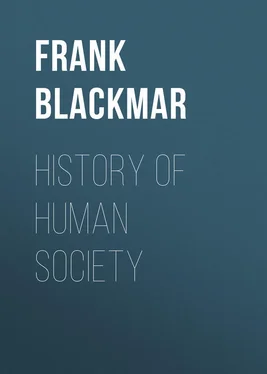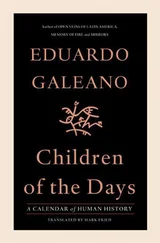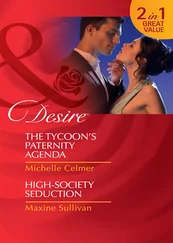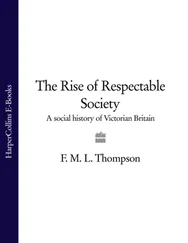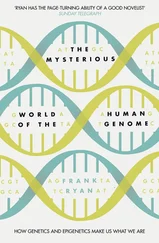Frank Blackmar - History of Human Society
Здесь есть возможность читать онлайн «Frank Blackmar - History of Human Society» — ознакомительный отрывок электронной книги совершенно бесплатно, а после прочтения отрывка купить полную версию. В некоторых случаях можно слушать аудио, скачать через торрент в формате fb2 и присутствует краткое содержание. ISBN: , Жанр: foreign_antique, foreign_prose, на английском языке. Описание произведения, (предисловие) а так же отзывы посетителей доступны на портале библиотеки ЛибКат.
- Название:History of Human Society
- Автор:
- Жанр:
- Год:неизвестен
- ISBN:http://www.gutenberg.org/ebooks/30610
- Рейтинг книги:3 / 5. Голосов: 1
-
Избранное:Добавить в избранное
- Отзывы:
-
Ваша оценка:
- 60
- 1
- 2
- 3
- 4
- 5
History of Human Society: краткое содержание, описание и аннотация
Предлагаем к чтению аннотацию, описание, краткое содержание или предисловие (зависит от того, что написал сам автор книги «History of Human Society»). Если вы не нашли необходимую информацию о книге — напишите в комментариях, мы постараемся отыскать её.
History of Human Society — читать онлайн ознакомительный отрывок
Ниже представлен текст книги, разбитый по страницам. Система сохранения места последней прочитанной страницы, позволяет с удобством читать онлайн бесплатно книгу «History of Human Society», без необходимости каждый раз заново искать на чём Вы остановились. Поставьте закладку, и сможете в любой момент перейти на страницу, на которой закончили чтение.
Интервал:
Закладка:
Progress May Be Measured by the Implements Used . – A very common method, based largely upon the researches of archaeologists, is to divide human society into four great periods, or ages, marked by the progress of man in the use of implements. The first of these periods is called the Stone Age, and embraces the time when man used stone for all purposes in the industrial arts so far as they had been developed. For convenience this period has been further divided into the age of ancient or unpolished implements and the age of modern or polished implements. The former includes the period when rude implements were chipped out of flint or other hard stone, without much idea of symmetry and beauty, and with no attempt to perfect or beautify them by smoothing and polishing their rough surface.
In the second period man learned to fashion more perfectly the implements, and in some instances to polish them to a high degree. Although the divisions are very general and very imperfect, they map out the great prehistoric era of man; but they must be considered as irregular, on account of the fact that the Stone Era of man occurred at different times in different tribes. Thus the inhabitants of North America were in the Stone Age less than two centuries ago, while some of the inhabitants of the South Sea Islands are in the Stone Age during the present century. It is quite remarkable that the use of stone implements was universal to all tribes and nations at some period of their existence.
After the long use of stone, man gradually became acquainted with some of the metals, and subsequently discovered the method of combining copper with tin and other alloys to form bronze, which material, to a large extent, added to the implements already in use. The Bronze Age is the most hypothetical of all these divisions, as it does not appear to have been as universal as the Stone, on account of the difficulty of obtaining metals. The use of copper by the Indians of the Lake Superior region was a very marked epoch in their development, and corresponds to the Bronze Age of other nations, although their advancement in other particulars appears to be less than that of other tribes of European origin which used bronze freely. Bronze implements have been found in great plenty in Scandinavia and Peru, and to a limited extent in North America. They certainly mark a stage of progress in advance of that of the inhabitants of the Stone Age. Bronze was the chief metal for implements throughout the early civilization of Europe.
Following the age of bronze is the Iron Age, in which the advancement of man is especially marked. The bronze implements were at first supplemented in their use by those of iron. But gradually iron implements superseded the bronze. The Iron Age still is with us. Possibly it has not yet reached its highest point. Considering the great structures built of iron, and the excessive use of iron in machinery, implements, and furniture, it is easy to realize that we are yet in this great period. Though we continue to use stone more than the ancients and more bronze for decoration and ornament than they, yet both are subordinate to the use of iron. General as the above classification is, it helps in an indefinite way to give us a central idea of progress and to mark off, somewhat indefinitely, periods of development.
The Development of Art . – Utility was the great purpose underlying the foundation of the industrial arts. The stone axe, or celt, was first made for a distinct service, but, in order to perfect its usefulness, its lines became more perfect and its surface more highly polished. So we might say for the spear-head, the knife, or the olla. Artistic lines and decorative beauty always followed the purpose of use. This could be applied to all of the products of man's invention to transform parts of nature to his use. On account of the durability of form, the attempt to trace the course of civilization by means of the development of the fine arts has met with much success. Though the idea of beauty is not essential to the preservation of man or to the making of the state, it has exerted a great influence in individual-building and in society-building. In our higher emotional natures aesthetic ideas have ruled with imperial sway.
But primitive ideas of beauty appear to us very crude, and even repulsive. The adornment of person with bright though rudely colored garments, the free use of paint on the person, and the promiscuous use of jewelry, as practised by the primitive peoples, present a great contrast to modern usage. Yet it is easy to trace the changes in custom and, moreover, to determine the origin of present customs. So also in representative art, the rude sketch of an elephant or a buffalo on ivory or stone and the finished picture by a Raphael are widely separated in genius and execution, but there is a logical connection between the two found in the slowly evolving human activities. The rude figure of a god moulded roughly from clay and the lifelike model by an Angelo have the same relations to man in his different states. The same comparison may be made between the low, monotonous moaning of the savage and the rapturous music of a Patti, or between the beating of the tom-tom and the lofty strains of a Mozart.
Progress Is Estimated by Economic Stages . – The progress of man is more clearly represented by the successive economic stages of his life. Thus we have first the primal nomadic period, in which man was a wanderer, subsisting on roots and berries, and with no definite social organization. This period, like all primary periods, is largely hypothetical. Having learned to capture game and fish, he entered what might be called the fisher-hunter stage, although he was still a nomad, and rapidly spread over a large part of the earth's surface, wandering from forest to forest and from stream to stream, searching for the means of subsistence and clothing.
When man learned to domesticate animals he made a great step forward and entered what is known as the pastoral period, in which his chief occupation was the care of flocks and herds. This contributed much to his material support and quickened his social and intellectual movement. After a time, when he remained in one place a sufficient time to harvest a short crop, he began agriculture in a tentative way, while his chief concern was yet with flocks and herds. He soon became permanently settled, and learned more fully the art of agriculture, and then entered the permanent agricultural stage. It was during this period that he made the most rapid advances in the industrial arts and in social order. This led to more densely populated communities, with permanent homes and the necessary development of law and government.
As the products of industry increased men began to exchange "the relatively superfluous for the relatively necessary," and trade in the form of barter became a permanent custom. This led to the use of money and a more extended system of exchange, and man entered the commercial era. This gave him a wider intercourse with surrounding tribes and nations, and brought about a greater diversity of ideas. The excessive demand for exchangeable goods, the accumulation of wealth, and the enlarged capacity for enjoyment centred the activities of life in industry, and man entered the industrial stage. At first he employed hand power for manufacturing goods, but soon he changed to power manufacture, brought about by discovery and invention. Water and steam were now applied to turn machinery, and the new conditions of production changed the whole industrial life. A revolution in industrial society caused an immediate shifting of social life. Classes of laborers in the great industrial army became prominent, and production was carried on in a gigantic way. We are still in this industrial world, and as electricity comes to the aid of steam we may be prepared for even greater changes in the future than we have witnessed in the past. 5 5 See Chapter XXVII .
Интервал:
Закладка:
Похожие книги на «History of Human Society»
Представляем Вашему вниманию похожие книги на «History of Human Society» списком для выбора. Мы отобрали схожую по названию и смыслу литературу в надежде предоставить читателям больше вариантов отыскать новые, интересные, ещё непрочитанные произведения.
Обсуждение, отзывы о книге «History of Human Society» и просто собственные мнения читателей. Оставьте ваши комментарии, напишите, что Вы думаете о произведении, его смысле или главных героях. Укажите что конкретно понравилось, а что нет, и почему Вы так считаете.
